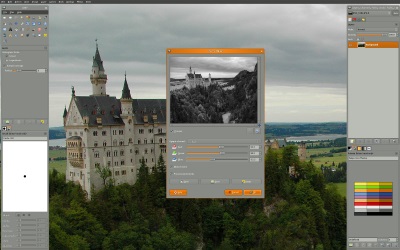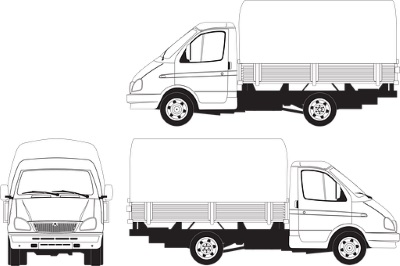
Illustrators create images that complement or help to clarify written text in books, magazines and online. Illustrators make work in pen, pencil, chalk, paint, computer graphics or other media, and they tend to have a distinctive style. Some illustrators work in art or graphic design departments, while others freelance for a number of companies. Read on for information on how to start a career as an illustrator.
Look Into Going to Art School
Even if you have natural artistic talent, it's a good idea to take art courses. Learning from professional artists is an invaluable experience. Your work will be critiqued, which will give you a chance to hone your skills and develop as an artist.
Take courses in drawing, painting, sculpture, ceramics, graphic design, and art history, as well as any specialized courses that interest you. Learn as much as you can about as many mediums as possible before you settle on a favorite to focus on.
You'll learn more if you're open to feedback. Take critiques with a grain of salt, but don't entirely dismiss them over hurt pride. The point of critiques is to help you improve as an artist, and without them you wouldn't be getting your tuition money's worth.
If art school or college isn't an option, find other ways to gain an art education. Take art courses at your local community college, seek out an apprenticeship with a local artist, or try to land an internship at a museum or studio. You may also take instruction from books, online tutorials and other resources.
Learn How to Use Graphic Design Software

Even if you don't create your art online, you'll still need to know how to use software to format it according to the specifications required by the client. Get familiar with the following graphic design software:
• Adobe Photoshop. This is considered the industry standard for photo manipulation, which is often a part of illustration projects.
• Adobe InDesign and Illustrator. These programs are used for manipulating images and laying them out with text.
• Corel Painter. This is the industry standard for digital painting and drawing.
The above mentioned applications are very expensive, if you're not made of money you may want to try GIMP (short for GNU Image Manipulation Program), a free multiplatform alternative to Photoshop. The fact that it's free does not mean GIMP is lacking in features; it packs enough power to genuinely rival Photoshop. Unfortunately, most commercial shops consider only Photoshop experience, but since all image processing programs work about the same, it will be easy to use Photoshop in the future if you are required to do so.
• Download GIMP here: GIMP
Decide What Media You Want to Specialize In

While many illustrators today work with computer programs such as Photoshop, Illustrator or Freehand, there is still a market for more traditional media such as pen, pencil, watercolor, oil paint, chalk, wood and linoleum cuts and other non-computer methods, depending on the subject matter you choose to illustrate.
While you won't be equally good in everything, it helps to have some sketching skill with pen and pencil as well as more labor-intensive media so you can communicate your ideas of the finished artwork to others.
Illustrating books, magazines, and other media is often a collaborative effort. You'll need to be able to factor in outside opinions and have the ability to use a broad range of techniques to achieve the effect that a client desires.
Decide What Kind of Illustrator You Want to Be

Technical illustrators tend to work with graphs and charts, illustrators for children's books are more likely to draw people and animals, and commercial illustrators may be called upon to draw a number of different things. What you most like to draw will determine your career path as an illustrator.
Develop a personal style
Many illustrators are capable of drawing a beautiful, life-like portrait or image based on a text. What makes your illustration different? The world of illustration is quite competitive, so it's important to have a signature style that stands out from the rest. Eventually you'll develop a reputation for making illustrations of a certain type, and clients who want that style will commission work from you.

A personal style can convey a certain mood. The work of Jordin Isip, for example, portrays expressionless figures often standing alone or apart from other figures. Publishers and companies seeking to illustrate text that is similar in tone know what to expect when they contact Isip.
Your presentation of ideas can factor into your personal style. Glenn Jones is known for making simple concepts seem unique and catchy.
You may want to specialize in a certain type of content. Jessica Hische works with text to create book covers, fonts and websites.
Do Free Work to Gain Experience
Do free work to gain experience. When you're just starting out, any experience provides a welcome addition to your portfolio, even if you don't get paid for it. Find creative ways to collaborate with people so you can start getting your work out there.
• If you have a friend who is a writer, illustrate her story and create a cover.
• Work with musicians on album cover materials.
• Design flyers and postcards for art galleries, book stores, coffee shops, and other local businesses.
Create a Website Portfolio

It's important to have a professional-looking website to showcase your work. It's easier to send people a link to a website than it is to mail them printed copies of your work. Clients will expect to be able to quickly access your work online, and with so many other illustrators competing for jobs, you don't want to keep them waiting.
The look of the website should match your signature style. Take as much care with the banner, font, background, and other website components as you would with any other work of art.
Your portfolio should include examples of each medium in which you work and may also show some of your illustrations progressing from individual to final form.
Your URL should be either your name or the name of your business, with separate URLs for each page, and ideally separate URLs for each piece so that an art director can forward it on to the editor of the publication for which you may be working.
Be sure to include your contact information and a short biography of your life as an artist.
Look for employers who use work like yours
You can find this information by looking for art directors' names on the mastheads of magazines available at either your local library or bookstore, consulting reference books such as The Artist's and Graphic Designer's Market or the Thomas Register, or through web sites such as the Graphic Artist's Guild. You should also develop the habit of looking at such things as posters, murals, restaurant menus, comic books and other items that you work might be suitable for, depending on the kind of illustration work you do.
Compile a List of Your Best Prospects
. Your list should focus on primarily on the subjects you most like to draw. For example, if you prefer to draw animals, your list should include magazines about animals and magazines for children, and other publications likely to use such drawings. If you have a large list, break your list down into groups of 5 or 10.
Send Out Samples
Target your samples to the publications or employers you've identified as the most likely to need your kind of work. Choose one particular style of rendering your subject matter and stick to that; don't send both a cartoonish lion and a realistic lion to the same publication. (You can of course send one style to one publication and the other to another, provided you send each publication a style appropriate to its needs.)
Article source: wikiHow wikiHow is a group effort to create a great resource: the world's largest free how to manual. wikiHow articles help people solve their everyday problems. wikiHow licenses all content under a Creative Commons License. The license allows wikiHow content to be used freely for noncommercial purposes. The Creative Commons License also allows for the creation of derivative works.
More How to Choose a Career Information:
• A Career as a Medical Assistant is Within Your Reach
• Housekeeping Career
• What Does a Graphic Designer Do?
• A Career as a Phlebotomy Technician
• Oil and Gas Jobs in New Mexico - More Jobs Than Applicants
• Career As A Hairstylist
• Online Resources to Help Make a Career Choice
• Pharmacy Technician - Up And Coming Career Path
• How to Become an Ultrasound Technician
• What is a Paralegal or Legal Assistant?


